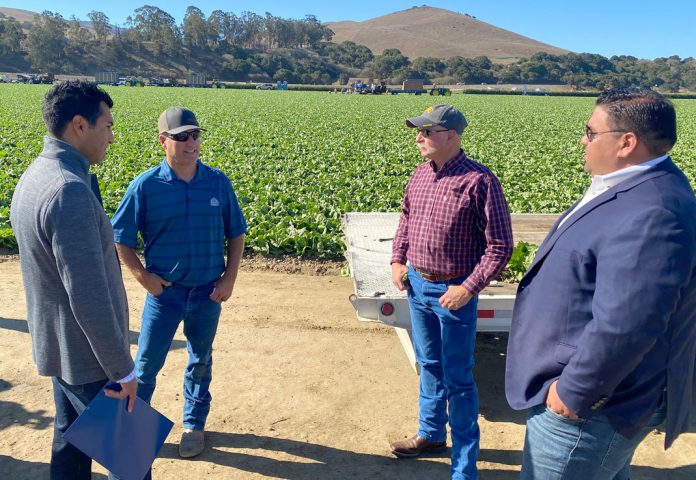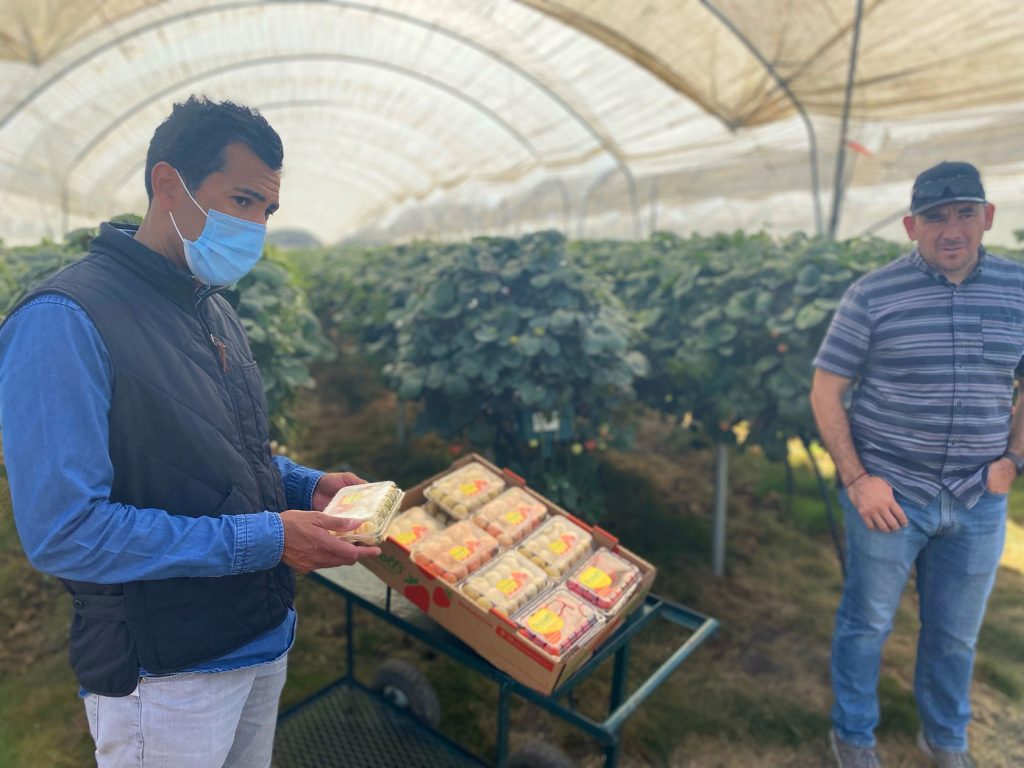
SALINAS VALLEY — Assemblymember Robert Rivas (D-Salinas) kicked off his statewide agricultural tour last month alongside local leaders and the Grower-Shipper Association of Central California.
This first leg of the tour, beginning in Rivas’ Assembly District 30 on the Central Coast, included a celebration of the procurement of $1 million in the state budget for funding to support INSV/PW pathogen research relating to the epidemic affecting the Salinas Valley’s signature leafy green crops — lettuce, kale, arugula and more — in Monterey County.
“The Salinas Valley is known as the ‘Salad Bowl of the World’ — no other region produces as many leafy greens as Monterey County. The leafy greens industry generates billions of dollars for the local and state economies and provides work for hundreds of thousands of local residents,” said Rivas, Chair of the Assembly Agriculture Committee. “The combination of rising costs, decreasing profits and spreading disease threatens California’s primacy in the leafy greens production economy. I am grateful that the governor and the legislature have prioritized the critical research necessary to stop the spread of these pathogens.”
Last year, the Impatiens Necrotic Spot Virus (INSV) and Pythium Wilt (PW) pathogens appeared in hundreds of fields across the region, and the average grower lost millions of dollars in revenue and reported cost increases of roughly $700 per acre to manage the pathogens and prevent further spread. Shippers suffered similar revenue losses.
“I want to thank Asm. Rivas for helping secure $1 million in the state budget for this critical need. This funding will support the INSVV/PW Task Force and its efforts with local scientists to develop integrated pest management (IPM) methods to control these diseases,” said Mary Zischke, Grower Shipper Association INSV/PW Taskforce Facilitator.

This budget allocation will allow CDFA, through the existing California Leafy Greens Research Program, to provide grants to researchers, the University of California system and others to study the impacts of INSV/PW and better understand how to end this epidemic. Any findings will help to mitigate the spread of the virus in Monterey County and help guide public policy in areas newly affected by the virus, such as the Coachella Valley.
“Assemblymember Rivas and I engaged in several conversations with local stakeholders to shine light on an issue for months, and now an initial investment is being made thanks to his leadership,” said Monterey County Supervisor Chris Lopez on social media. “INSV and Pythium are a dangerous combination wreaking havoc on our local leafy greens. In order to conduct the necessary research to mitigate the damage, while aiming to reduce the use of chemical responses to keep our farmworkers safe, this investment will be a great foundation towards combating and beating these diseases.”
On day one of the tour, Sept. 20, Rivas joined California Labor Commissioner Lilia Garcia-Brower, representatives from state and county agencies, including Lopez, and local community organizations in a press conference promoting farmworker labor rights, outreach and advocacy at the Hilton Ranch in Salinas.
Next, Rivas met with the Monterey County Food Bank, which distributed over 34 million pounds of food during the pandemic. In Salinas, the Assemblymember learned about the transformative work of Big Sur Land Trust to repurpose 73 acres into a community park that includes restored and enhanced wetland.
The day ended with Rivas touring a new USDA research facility under construction in East Salinas, which will bring increased capacity for agricultural research that supports local growers.

Rivas wrapped up the Central Coast leg of his second statewide agricultural tour on Sept. 21, during which he met with a diverse group of local farmers, community groups and stakeholders on a number of issues faced in the agriculture industry.
Day two of the Central Coast leg started with a local ranch visit to learn more about the challenges brought on by drought.
Rivas also visited berry farms, including Driscoll’s in Santa Cruz County, to learn more about issues faced by that industry and their research to create better, tastier berry varieties. He ended the day by visiting Pippin Orchards, an affordable housing development in Watsonville where more than half the residents are agricultural workers.
Rivas’ agricultural tour will occur across four weeks in September, October and November, with stops in the Central Valley, Bay Area, Southern Coast and the Coachella Valley, in addition to visiting the Central Coast. He will meet with farmers, agricultural workers, industry and labor leaders, environmentalists, scientists, elected officials and other stakeholders to discuss the future of the agriculture industry in California.
With the devastating effects of drought, Covid-19 and ever-increasing wildfire events, the objective of the tour is to listen and learn from leading experts and advocates during the fall recess of the 2021-22 Legislative Session.
According to Rivas, these discussions will better inform the next legislative steps necessary to aid recovery, combat climate change impacts and maintain California’s agricultural leadership.














